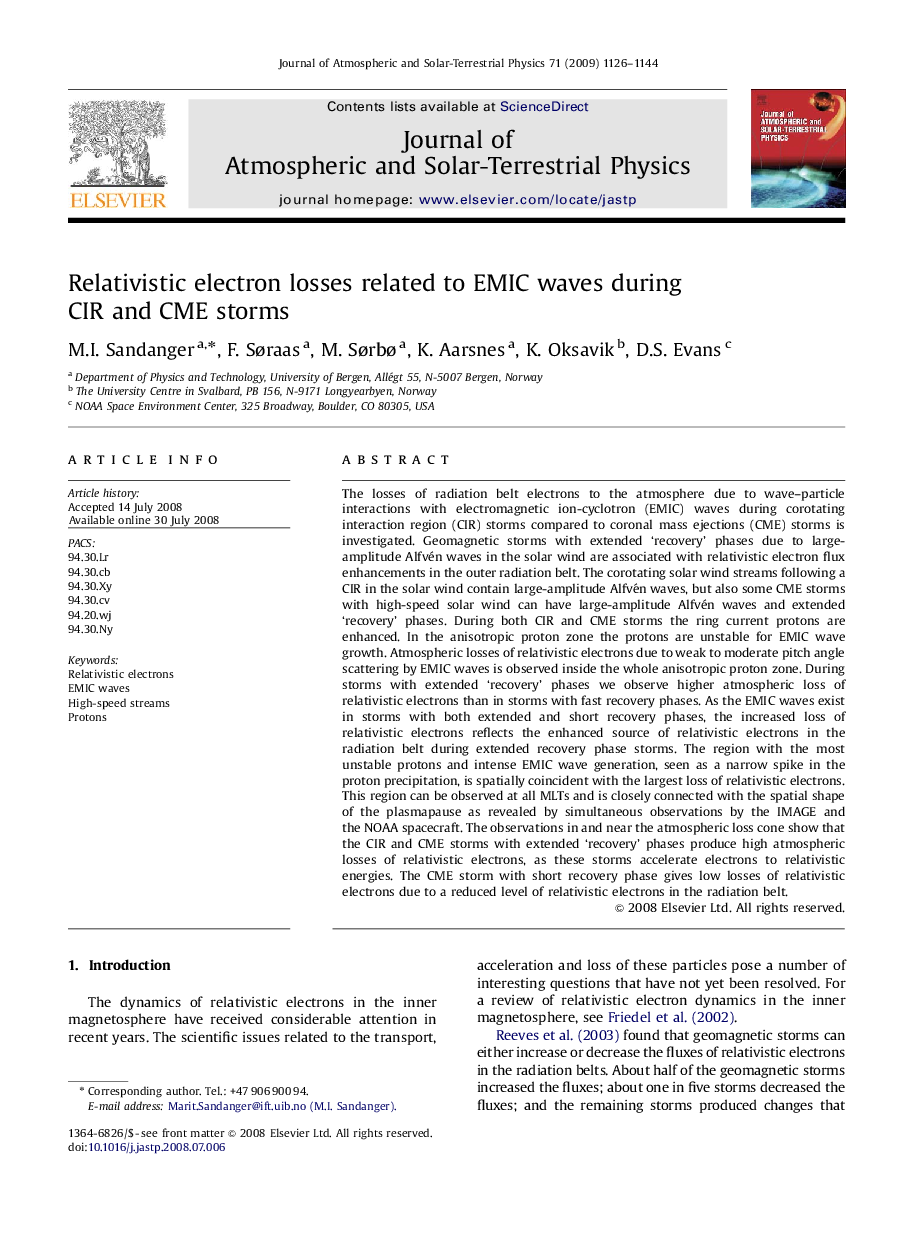| کد مقاله | کد نشریه | سال انتشار | مقاله انگلیسی | نسخه تمام متن |
|---|---|---|---|---|
| 1777490 | 1523670 | 2009 | 19 صفحه PDF | دانلود رایگان |

The losses of radiation belt electrons to the atmosphere due to wave–particle interactions with electromagnetic ion-cyclotron (EMIC) waves during corotating interaction region (CIR) storms compared to coronal mass ejections (CME) storms is investigated. Geomagnetic storms with extended ‘recovery’ phases due to large-amplitude Alfvén waves in the solar wind are associated with relativistic electron flux enhancements in the outer radiation belt. The corotating solar wind streams following a CIR in the solar wind contain large-amplitude Alfvén waves, but also some CME storms with high-speed solar wind can have large-amplitude Alfvén waves and extended ‘recovery’ phases. During both CIR and CME storms the ring current protons are enhanced. In the anisotropic proton zone the protons are unstable for EMIC wave growth. Atmospheric losses of relativistic electrons due to weak to moderate pitch angle scattering by EMIC waves is observed inside the whole anisotropic proton zone. During storms with extended ‘recovery’ phases we observe higher atmospheric loss of relativistic electrons than in storms with fast recovery phases. As the EMIC waves exist in storms with both extended and short recovery phases, the increased loss of relativistic electrons reflects the enhanced source of relativistic electrons in the radiation belt during extended recovery phase storms. The region with the most unstable protons and intense EMIC wave generation, seen as a narrow spike in the proton precipitation, is spatially coincident with the largest loss of relativistic electrons. This region can be observed at all MLTs and is closely connected with the spatial shape of the plasmapause as revealed by simultaneous observations by the IMAGE and the NOAA spacecraft. The observations in and near the atmospheric loss cone show that the CIR and CME storms with extended ‘recovery’ phases produce high atmospheric losses of relativistic electrons, as these storms accelerate electrons to relativistic energies. The CME storm with short recovery phase gives low losses of relativistic electrons due to a reduced level of relativistic electrons in the radiation belt.
Journal: Journal of Atmospheric and Solar-Terrestrial Physics - Volume 71, Issues 10–11, July 2009, Pages 1126–1144